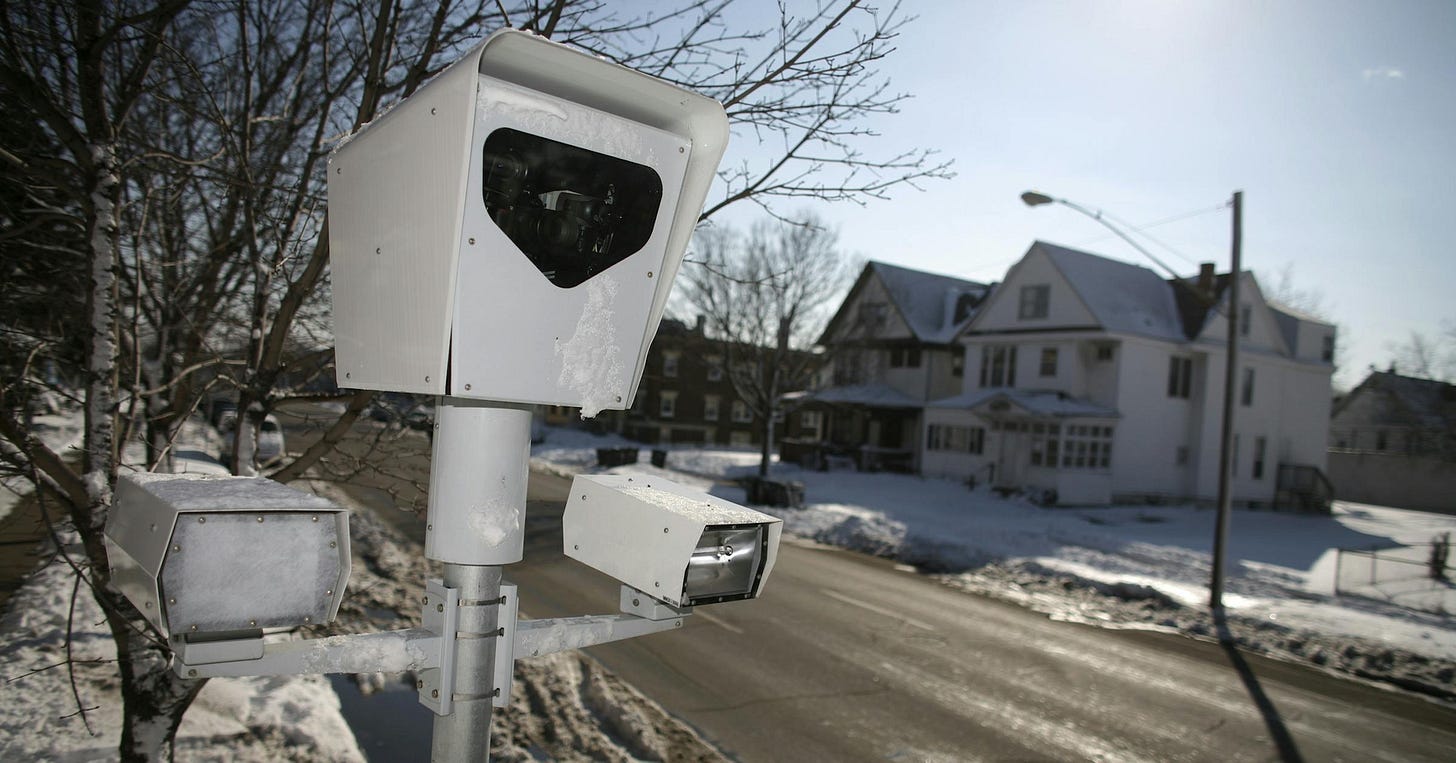Slow Down, Minneapolis: Speed Cameras Are Coming to Five Intersections This Fall
But can Vision Zero reduce traffic deaths without reinforcing racial disparities?
This fall, Minneapolis will activate its first-ever automated speed enforcement cameras, a $12 million step toward reducing deadly traffic behavior through technology—not traffic stops.
The new system is part of the city’s Vision Zero initiative, a strategy aimed at eliminating all traffic deaths by 2027. While supporters tout the plan as a practical public safety upgrade, critics argue that traffic enforcement—even when automated—can repeat long-standing racial and infrastructural inequities, especially in a city like Minneapolis.
On Site Public Media is a reader-supported publication. To receive new posts and support our work, become a subscriber.
Where the Cameras Will Go?
Cameras will be installed at five intersections this September:
3rd St. N near 1st Ave N (Downtown)
Fremont Ave N near W. Broadway Ave (Near North)
18th Ave NE near Central Ave NE (Northeast)
Chicago Ave near Franklin Ave E (Ventura Village)
Nicollet Ave near 46th St. W (King Field / Tangletown)
Each intersection was selected based on crash history, pedestrian activity, and proximity to schools.
Why Now?
Between 2022 and 2024, 43 people died in Minneapolis in crashes involving speeding. Another 36 people died in incidents involving red-light running or a combination of both. City leaders believe automated enforcement is one way to slow drivers down and prevent more deaths.
Mayor Jacob Frey and the City Council recently approved a contract with NovoaGlobal, a national traffic technology provider, to launch the program.
How It Works
The program begins with a 30-day grace period in September 2025. Citations will be issued starting in October:
$40 fine for speeds 10+ mph over the limit
$80 fine for 20+ mph over the limit
First-time offenders may take a free safety class instead of paying
Cameras will only capture images of the rear license plate, not drivers or passengers. Violations are reviewed by traffic control agents before citations are mailed. These citations will not affect a person’s driving record, insurance rates, or license status.
Public Feedback and Legal Requirements
The pilot complies with a new state law requiring that camera locations be:
Within 2,000 feet of a school
In areas with known safety risks
Reflective of racial and socioeconomic diversity
City officials say over 1,200 residents provided feedback, and 83% supported the pilot. Revenue from fines must be reinvested in traffic safety infrastructure—not diverted to other city expenses.
On Site Public Media is a reader-supported publication. To receive new posts and support our work, become a subscriber.
Why Some Residents Remain Skeptical
Although Vision Zero has saved lives in other cities, it has also faced growing criticism for its reliance on enforcement. In many U.S. cities, enforcement has become the most emphasized and controversial pillar of Vision Zero—often outweighing investments in infrastructure or public education.
In Minneapolis, this approach raises alarms due to the city’s well-documented history of racially biased traffic enforcement. Both the Minnesota Department of Human Rights (2022) and the U.S. Department of Justice (2023) found that the Minneapolis Police Department (MPD) engaged in racially discriminatory policing, particularly through traffic stops and citations. These patterns show that enforcement—whether by officers or cameras—is not neutral in its outcomes or impact.
Even if cameras reduce officer discretion, decisions about where they are placed and which behaviors they penalize are shaped by broader systems of inequality.
Can Cameras Be More Fair?
Automated cameras remove some forms of bias by applying rules uniformly to all vehicles. But studies in cities like Washington, D.C., have shown that Black and low-income neighborhoods often receive a disproportionate number of camera tickets. This is not necessarily because residents are driving differently, but because their neighborhoods are more heavily targeted—often due to longstanding infrastructure neglect and a lack of political power to redirect safety investments elsewhere.
In New York City, for instance, Vision Zero enforcement once focused on electric bike delivery workers—mostly immigrants and people of color—despite a lack of evidence showing they posed a risk. Meanwhile, hit-and-run drivers, who cause significant harm, often faced little accountability. These examples demonstrate how enforcement-based strategies can overlook the most dangerous behaviors while punishing those with the fewest resources.
Infrastructure and Inequity in Minneapolis
In Minneapolis, the burden of traffic violence—and traffic enforcement—falls unequally. Neighborhoods with the highest crash rates often lack basic infrastructure like bike lanes, curb extensions, or safe crosswalks. Many of these areas are also historically Black, Indigenous, or low-income.
Data shows that corridors like East Franklin Avenue remain high-crash zones for pedestrians and cyclists, yet they lack significant safety upgrades. The intersection at Franklin and Nicollet, for example, has remained virtually unchanged despite decades of complaints. Residents have pointed out that if the same intersection existed in a wealthier, white neighborhood, it would have been rebuilt long ago.
This pattern illustrates how infrastructure disinvestment often parallels racial inequity—and how targeting these same areas for automated enforcement can feel like punishment for the city’s own neglect.
Vision Zero Needs Rebalancing
Vision Zero doesn’t have to rely on enforcement. Cities have the power to prioritize engineering—like road redesigns, traffic calming measures, and dedicated bike and bus infrastructure—over penalties. But too often, enforcement is the cheapest, fastest tool on the table, even if it’s not the most effective or just.
Involving law enforcement in Vision Zero plans is especially problematic in cities like Minneapolis, where trust between communities of color and police remains deeply fractured. And even automated systems, while seemingly impartial, can reinforce racialized outcomes if they’re not paired with meaningful investment in the communities they surveil.
Building safer streets isn’t just about punishing bad drivers—it’s about addressing the systemic inequalities that make the infrastructure in some neighborhoods more dangerous to begin with.
Thanks for reading! This post is public so feel free to share it.





